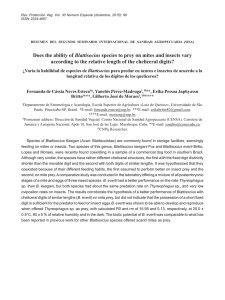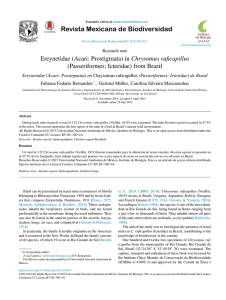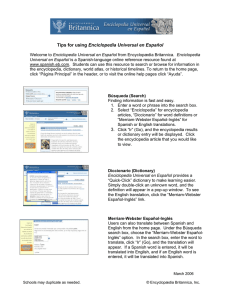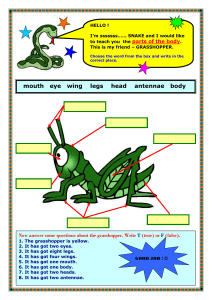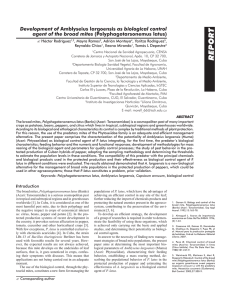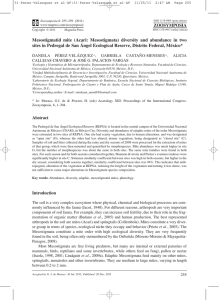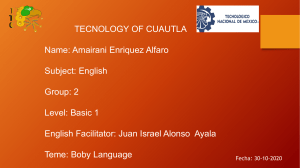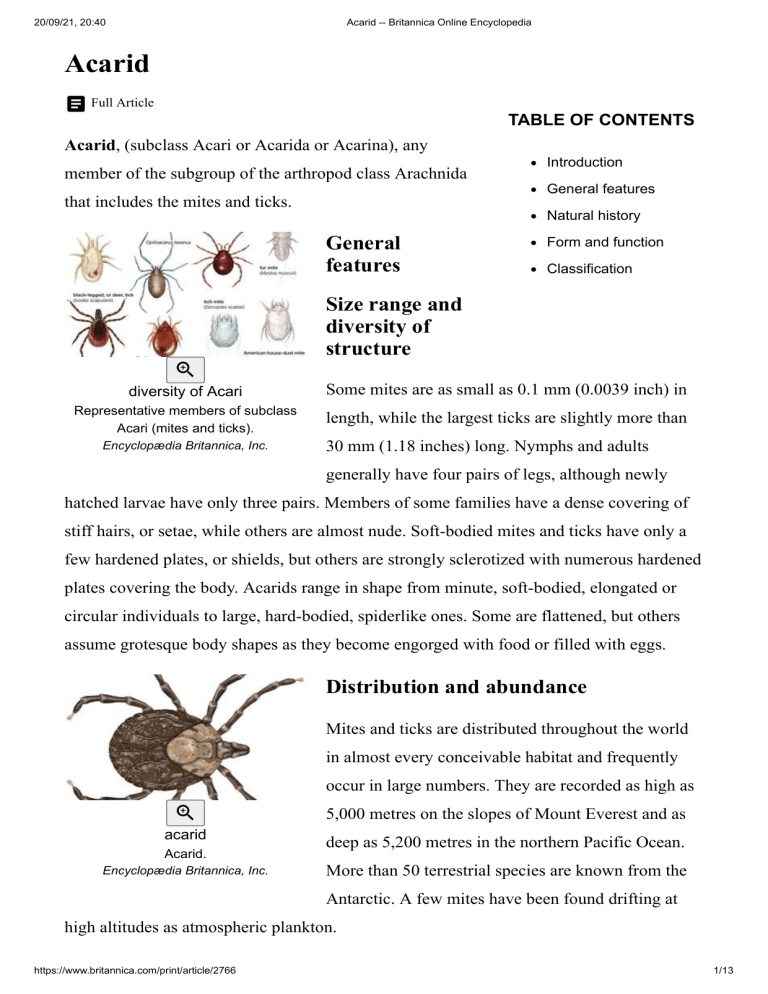
20/09/21, 20:40 Acarid -- Britannica Online Encyclopedia Acarid article Full Article TABLE OF CONTENTS Acarid, (subclass Acari or Acarida or Acarina), any member of the subgroup of the arthropod class Arachnida that includes the mites and ticks. Introduction General features Natural history General features Form and function Classification Size range and diversity of structure zoom_in diversity of Acari Some mites are as small as 0.1 mm (0.0039 inch) in Representative members of subclass Acari (mites and ticks). length, while the largest ticks are slightly more than Encyclopædia Britannica, Inc. 30 mm (1.18 inches) long. Nymphs and adults generally have four pairs of legs, although newly hatched larvae have only three pairs. Members of some families have a dense covering of stiff hairs, or setae, while others are almost nude. Soft-bodied mites and ticks have only a few hardened plates, or shields, but others are strongly sclerotized with numerous hardened plates covering the body. Acarids range in shape from minute, soft-bodied, elongated or circular individuals to large, hard-bodied, spiderlike ones. Some are flattened, but others assume grotesque body shapes as they become engorged with food or filled with eggs. Distribution and abundance Mites and ticks are distributed throughout the world in almost every conceivable habitat and frequently occur in large numbers. They are recorded as high as zoom_in acarid Acarid. Encyclopædia Britannica, Inc. 5,000 metres on the slopes of Mount Everest and as deep as 5,200 metres in the northern Pacific Ocean. More than 50 terrestrial species are known from the Antarctic. A few mites have been found drifting at high altitudes as atmospheric plankton. https://www.britannica.com/print/article/2766 1/13 20/09/21, 20:40 Acarid -- Britannica Online Encyclopedia Acarids have been found in diverse habitats that include hot springs, caves, harsh deserts, and tundras. Although many of the approximately 50,000 species described are free-living, some are parasites of zoom_in Acarid A scanning electron micrograph of a peacock mite (Tuckerella; magnified 260x). Eric Erbe and Christopher animals. Some taxonomists have estimated that, if all species were known, the total number of species of mites and ticks would be more than 500,000. Importance Pooley/Agriculture Research Service, Beltsville Electron Microscopy Unit, U.S. Department of Agriculture The Acari are an economically important arachnid group. Ticks (order Ixodida) surpass all other arthropods, except mosquitoes, in the number of diseases they transmit to humans. Many mites also are intermediate hosts of diseases transmissible to humans, domesticated animals, and crops. Others are pests as a result of their biting or feeding habits or the damage they cause to food and related products. Eriophyid and tetranychid mites (suborder Prostigmata) include many plant-feeding species that frequently seriously injure or kill the host plant. Eriophyids are the only phytophagous acarids known zoom_in Holothyrus legendrei The mite Holothyrus legendrei. Encyclopædia Britannica, Inc. to transmit plant viruses. In the mite order Holothyrida (superorder Parasitiformes), one species of Holothyrus is known to secrete an irritant substance that is toxic to fowl and humans. The house-mouse mite (Liponyssoides sanguineus) transmits rickettsialpox to humans. Widespread species such as the tropical fowl mite (Ornithonyssus bursa), northern fowl mite (O. sylviarum), and chicken mite (Dermanyssus gallinae) also are pests of poultry and humans. The mange, itch, or scab mites (Astigmata) occur on many different animals including humans. House-dust allergy is caused by species of Dermatophagoides, an extremely common mite. https://www.britannica.com/print/article/2766 2/13 20/09/21, 20:40 Acarid -- Britannica Online Encyclopedia The beetle mites (Oribatida) are among the most numerous soil arthropods. These mites are important in the development of soil fertility. Some also act as intermediate hosts for important tapeworm parasites zoom_in itch mite Itch mite (Sarcoptes scabiei). Encyclopædia Britannica, Inc. of domestic animals. Lyme disease of humans and some animals is caused by a spirochete transmitted by Ixodes dammini or other related species. Rocky Mountain spotted fever, a rickettsial disease that occurs in the United States, is transmitted to humans by the bite of several species of hard ticks (Ixodidae), especially the Rocky zoom_in American house dust mite American house dust mite (Dermatophagoides farinae). Encyclopædia Britannica, Inc. Mountain wood tick (Dermacentor andersoni) and the American dog tick (D. variabilis). Relapsing fever, an important bacterial disease throughout the world, is transmitted to humans by certain species of soft ticks (Argasidae) of the genus Ornithodoros. Texas cattle fever is a widespread protozoan disease transmitted by cattle ticks (Boophilus). This disease, no longer prevalent in the United States because the tick has been eliminated, remains important in many tropical and subtropical countries. Various other diseases transmitted to animals by ticks include anaplasmosis, tularemia, Q fever, Colorado tick fever, hemorrhagic fever, and tick-borne encephalitis. The chiggers (Prostigmata), important pests of humans, also transmit scrub typhus (tsutsugamushi disease), a rickettsial disease occurring in the Asia-Pacific region. Natural history Reproduction and life cycle The sexes occur separately in acarids; i.e., there are both males and females. Most species lay eggs (oviparity), but in some parasitic ones the eggs hatch within the female, and the young are born alive. Many species also can reproduce by parthenogenesis, i.e., by development of unfertilized eggs. https://www.britannica.com/print/article/2766 3/13 20/09/21, 20:40 Acarid -- Britannica Online Encyclopedia Sperm may be transferred either directly or in packets called spermatophores. The male spermatozoa may be introduced by the male copulatory structure (aedeagus) directly into the female genital opening or, as in some Astigmata, into a special female copulatory structure called a bursa copulatrix. The males of species that use the latter method may have special copulatory structures (e.g., suckers, spurs, or enlarged legs) for grasping the female. Some males produce a sealed packet containing spermatozoa (spermatophore) that is transferred to the female genital opening, either directly by the mouthparts of the male or indirectly by deposition on a surface, after which the female places it in her genital opening. Eggs begin to develop after fertilization. Although only a few eggs develop simultaneously in many acarids, large numbers develop at the same time in ticks and some mites. Eggs are deposited haphazardly on food material by many plant- and grain-feeding species and are hidden in the soil by predatory soil-inhabiting species. In one predatory mite, Cheyletus eruditus, females brood a small cluster of eggs and will drive other arthropods from them. The primitive life cycle among species that lay eggs has four active immature stages: hexapod larva, protonymph, deutonymph, and tritonymph. There are many deviations from this primitive type of life cycle, which is found only in the Oribatida and some Prostigmata. The hexapod larva, characterized by three pairs of legs, is common to all families of acarids except Eriophyidae (Prostigmata), whose members have only two pairs of legs in all active stages. Among the Parasitiformes the Mesostigmata lack the tritonymphal stage. The Ixodidae may have only one nymphal stage, while the Argasidae may have as many as eight. Some Prostigmata (Podapolipidae) develop directly from egg to larviform adults, while others have from one to three nymphal stages. Many Astigmata (superorder Acariformes) have a nonfeeding (hypopal) stage between the protonymphal and tritonymphal stages, which frequently occurs during adverse environmental conditions. Ecology The free-living acarids include species from all of the orders and suborders except Ixodida (ticks). The beetle mites (Oribatida) are largely fungal feeders that zoom_in mite; Opilioacarus texanus https://www.britannica.com/print/article/2766 are extremely numerous in the surface layers of soil. It has been estimated that as many as six million 4/13 20/09/21, 20:40 Acarid -- Britannica Online Encyclopedia The mite Opilioacarus texanus. Encyclopædia Britannica, Inc. members of one species can occur in one acre of pasture soil. Some families of free-living mites have specialized styletlike feeding organs (chelicerae), which can pierce plant cells and are used to suck out their contents. Feeding by members of the family zoom_in soil mite The soil mite Diapterobates notatus. Encyclopædia Britannica, Inc. Eriophyidae (Prostigmata), for example, causes the formation of galls, dwarfing of shoots, and malformation of fruits and leaves (witches’-broom). The family Tetranychidae (Prostigmata) contains the spider mites, which are foliage feeders. Several species capable of producing silk can spin a light web over plant leaves. The families Acaridae and Glycyphagidae (Astigmata), pests of stored grain and cereal products, have blunt, toothed chelicerae that enable them to scrape and gouge their food material. Some species of these two families frequently increase to tremendous numbers in foodstuffs, causing “grocers’ itch” or “copra itch” in humans. There are many free-living predatory mites that live in soil, humus, other organic matter, or water, and prey on small arthropods, their eggs, and other small invertebrates. Many free-living mites utilize insects or other arthropods to disperse themselves, a nonparasitic association known as phoresy. Adults of the genus Dinogamasus (Laelapidae), for example, live in a special mite pouch on an abdominal segment of certain carpenter bees. Parasitic species are known in all acarid groups except Opilioacariformes, Holothyrina, and Oribatida. The majority are external parasites, including those most important to humans and domesticated animals. A few species are internal parasites of animals. One ecological group contains families found only on the skin surface or feathers of the host. Psoroptidae (Astigmata), or scab mites, for example, attack the skin surface of mammals and feed on skin scales. Their continuous abrasion of the skin causes a lesion over which a protective scab eventually forms. A second ecological group contains several families of mites that burrow into skin, hair follicles, or quills of the host and feed on fatty secretions, lymph https://www.britannica.com/print/article/2766 5/13 20/09/21, 20:40 Acarid -- Britannica Online Encyclopedia material, or, occasionally, blood. The families Sarcoptidae (Astigmata) and Psorergatidae (Prostigmata), for example, contain species that burrow just beneath the skin of a mammalian host, causing mange or itch. A third ecological group contains species that pierce the skin and suck up tissue fluid or blood without actually invading the tissues. These species may spend either short or long intervals on the host. The larvae of Trombiculidae (Prostigmata), the chiggers, parasitize many vertebrates and a few invertebrates and feed on host tissues (chigger nymphs and adults, however, are free-living and zoom_in predatory). Species of Dermanyssidae, fur mite Macronyssidae, and many Laelapidae (Mesostigmata) Fur mite (Myobia musculi). feed on blood or tissue secretions of mammals, birds, Encyclopædia Britannica, Inc. and reptiles. Some species, which spend much of their time off the host and in the nest, frequently are referred to as nest parasites, or nidicolous species. The protonymph of one species of Macronyssidae, found in the mouth of a longnosed bat, causes destruction of tissues; and a species of Spinturnicidae (Mesostigmata) is found in the anal opening of certain species of cave-dwelling bats. Most members of the tick families Argasidae and Ixodidae (Ixodida) are obligate blood-sucking parasites of vertebrates, while most Argasidae nymphs and adults feed on the host for only a few minutes. Ixodidae in most stages in the life cycle remain attached to the host for several days. A few families of mites are found in additional parasitic associations with vertebrates. Rhinonyssidae, Entonyssidae, and Halarchnidae (Mesostigmata), for example, are respiratory parasites zoom_in tropical rat mite Tropical rat mite (Ornithonyssus bacoti). Encyclopædia Britannica, Inc. of birds, snakes, and mammals, respectively. Several families of mites have established a parasitic relationship with invertebrates. Larvae of Trombidiidae and Erythraeidae (Prostigmata) and other families, for example, are parasitic on insects but are free living in later stages. In contrast, in the aquatic family Unionicolidae https://www.britannica.com/print/article/2766 6/13 20/09/21, 20:40 Acarid -- Britannica Online Encyclopedia (Prostigmata), nymphs and adults parasitize mollusks and sponges, and larvae are freeliving. Form and function External features The subclass Acari is generally distinguished by the lack of body segmentation, although it is secondarily developed in a few families. This is a characteristic shared only with the spiders among the arachnids. An anterior region called the gnathosoma contains the mouth, specialized feeding appendages (chelicerae), and segmented structures called palps, or pedipalps. The mouth or buccal cavity joins the pharynx internally, and paired salivary glands may discharge into the mouth or in front of its opening. The chelicerae are basically three-segmented pincerlike appendages; however, as a result of the diverse feeding habits of some mites, chelicerae sometimes are modified as piercing organs (stylets). The pedipalps, which may be simple sensory structures or predatory organs modified for grasping or piercing, usually have five free segments: trochanter, femur, genu, tibia, tarsus, and frequently there also is a clawlike apotele (a modified sixth distal segment of the appendage). Behind the gnathosoma is a large region (idiosoma) that bears the legs, the genital and anal openings, and an assortment of tactile and sensory structures. Respiratory pores (stigmata) and sclerotized shields zoom_in tick Environmental scanning electron microscope image of a tick. Clearly visible is the underside of the tick's barbed hypostome (holdfast organ), which channels the tick's saliva into the host and transfers the host's blood into the tick. © Sarah Swanson of various shapes and sizes usually are present. The functions of the idiosoma parallel those of the abdomen, thorax, and portions of the head of insects. Although nymphs and adults commonly have four pairs of legs, some Prostigmata (Eriophyidae, Podapolipidae, Tenuipalpidae) and Astigmata (Evansacaridae, Teinocoptidae) have one to three pairs. Legs have the same basic segmentation as pedipalps plus a basal coxa. However, fusion or division of segments frequently occurs. The tarsus may be terminated either by several sensory hairs (setae) or by a clawlike or https://www.britannica.com/print/article/2766 7/13 20/09/21, 20:40 Acarid -- Britannica Online Encyclopedia suckerlike apotele. The legs, which frequently bear ridges and spurs, always have tactile and sensory setae that follow a fixed pattern in position and number. These leg setae are used in establishing systematic relationships. The first pair of legs usually functions in locomotion but sometimes is modified as a sensory or predatory structure. The genital opening, usually located on the underside between the legs, frequently is protected by one or more shields or flaps and has two or three pairs of disks. In some Prostigmata (Cloacaridae, zoom_in black-legged tick Black-legged, or deer, tick (Ixodes scapularis). Encyclopædia Britannica, Inc. Demodicidae, Myobiidae, Ophioptidae, Podapolipidae), however, the male genitalia (aedeagus) is located on the dorsal side. The anal opening, also generally on the underside, is surrounded by a shield in the Mesostigmata and is always closed by a pair of valves. In some Prostigmata (Penthaleidae) and Astigmata (Chirorhynchobiidae, Knemidocoptidae) the anal opening is located on the dorsal side. As in all arthropods, the cuticle of acarids is secreted by an outer cell layer called the epidermis. The cuticle of many acarids absorbs water from the air, enabling them to avoid desiccation. There are many different types of sensory receptors, most of which are setal. The setae, of many shapes and sizes, may be hollow chemoreceptors or solid, tactile structures. Other specialized setae, known as trichobothria, pseudostigmatic organs, eupathidia, or famuli, occur only in the Acariformes. A sensory pit called Haller’s organ contains sensory setae and is found on the tarsal segment of the first pair of legs of all ticks (Ixodida). One to three pairs of eyes are present on the anterior of the idiosoma in Opilioacariformes, a few Astigmata, and many Ixodida and Prostigmata. A single median eye also may be present in some Prostigmata. Internal features The digestive system consists of an anterior muscular pharynx, long narrow esophagus, ventriculus (stomach), short intestine, hindgut, and posterior rectal cavity. The ventriculus may have several paired gastric cecae (blind sacs), which function partly as food-storage https://www.britannica.com/print/article/2766 8/13 20/09/21, 20:40 Acarid -- Britannica Online Encyclopedia organs and enable some acarids to go for long periods without feeding. One or two pairs of excretory organs (Malpighian tubules), which may open into the hindgut, absorb waste material from the body cavity and transform it into an organic compound called guanine, which passes into the hindgut, where it is mixed with other waste products, and eventually is excreted from the anal orifice. Some Ixodida and Prostigmata have no connection between the ventriculus and hindgut, and the latter serves as an excretory organ. The idiosomal body cavity contains various organ systems bathed in hemolymph (arthropod blood). Circulation of blood carrying the products of digestion and excretion may be by movement of zoom_in internal features of a mite Internal features of a mite. Encyclopædia Britannica, Inc. muscles or by a “heart” (or vessel), which is present in some orders and suborders. The blood of some soft ticks (Argasidae) differs from that of other acarids biochemically, although it is similar morphologically. One to four pairs of respiratory stigmata are present in the idiosomal region of all acarid orders and suborders except Astigmata and some Prostigmata zoom_in cattle tick Cattle tick (Boophilus). E.R. Degginger/Encyclopædia Britannica, Inc. keyboard_arrow_left keyboard_arrow_right and Oribatida, which respire through the cuticle or have other types of respiratory organs. Stigmata open internally into a system of tubes (tracheae) that radiates throughout the body. Tracheae function in the exchange of oxygen and carbon dioxide and help to control water loss in certain species. A well-developed central nervous system surrounds the esophagus in the idiosoma. A series of nerves radiating from one part of the brain innervates the legs, digestive system, musculature, and genitalia. The mouthparts are innervated by another part of the brain. The male and female reproductive systems vary in structure and position. The gonads may be paired (primitive condition), united, or multiple (testes in some Prostigmata). There usually are accessory glands associated with the reproductive systems, especially in males. https://www.britannica.com/print/article/2766 9/13 20/09/21, 20:40 Acarid -- Britannica Online Encyclopedia Four types of pheromones, alarm, assembly, attachment, and sex, have been reported in acarids, with those of ticks (Ixodida) being the best known. Classification Distinguishing taxonomic features Features that distinguish the superorders, orders, and suborders of Acari include the presence or absence of stigmata—if present, the type, relative position, and structures associated with the stigmata are important—the position and form of the palpal apotele (modified distal segment of palpus) when present, the type and location of sensory organs, the type of mouthparts, and the presence or absence of eyes. Annotated classification The process of evolution in mites and ticks has resulted in a degree of specialization and morphological diversity not found in any other group of arachnids. Acarids, believed to be derived from two lines of descent, have a long, though meagre, fossil history dating from the Devonian Period (about 395 million years ago). The acarids may be separated into two superorders: Parasitiformes and Acariformes (in some classifications the order Opilioacarida is considered a superorder, Opilioacariformes). Representative orders and suborders are included beneath superorders. Subclass Acari (Acarina, Acarida; mites and ticks) Arachnids usually without visible segmentation; mostly minute in size; larvae usually with 3 pairs of legs, adults usually with 4 pairs; diverse habitats include plants, soil, animals, stored foods, fresh and marine water; parasitic forms may transmit diseases; worldwide distribution; about 50,000 described species. Superorder Parasitiformes (mites and ticks) Small to large in size; usually heavily sclerotized mites; 1 to 4 pairs of stigmata on posterior portion of body; peritremes, or grooves, present or absent; palpal apotele present or absent; tarsi of 1st pair of legs with sensory organs. Order Mesostigmata Generally with a number of sclerotized plates; 0.2–2 mm in size; eyes absent; pair of stigmata between coxae of 2nd, 3rd, or 4th pair of legs; usually associated with elongated peritremes; palpal apotele present; tritosternum usually well developed but reduced to absent in some parasitic families; majority free-living in soil or decaying organic matter; many parasites of vertebrates (except amphibians and https://www.britannica.com/print/article/2766 10/13 20/09/21, 20:40 Acarid -- Britannica Online Encyclopedia fishes) and invertebrates; some economically important; cosmopolitan; about 76 families, and 5,050 species. Order Holothyrida Heavily sclerotized; 2–7 mm in size; eyes absent; pair of coxal glands opening at base of coxae of 1st pair of legs; pair of stigmata behind coxae of 3rd and 4th pair of legs, peritremes present; palpal apotele present; tritosternum absent; terrestrial, under stones and decaying vegetation; recorded from Indo-Pacific region, southeastern United States; carnivorous; of minor economic importance; 3 families and about 13 species. Order Ixodida (ticks) Largest Acari; adults 2–30 mm in size, eyes present or absent; pair of lateral stigmata enclosed in stigmatal plate (modified peritreme) anterior or behind coxae of 4th pair of legs; palpal apotele and tritosternum absent; sensory organ on tarsus of 1st pair of legs a pit (Haller’s organ); mouthparts modified to form hypostome (holdfast organ) with teeth turned backward; active stages mostly external parasites (some nonfeeders), feeding primarily on blood of vertebrates (except fishes); many members economically important as disease carriers; cosmopolitan; 3 families and about 825 species. Order Opilioacarida (mites) Weakly sclerotized mites superficially resembling members of arachnid subclass Opiliones; 1–2.5 mm in size; body divided into hairy anterior portion bearing 2 or 3 pairs of simple eyes and nude posterior portion with over 200 pores, 4 pairs of stigmata, and 12 secondarily developed segments; terminal palpal apotele a pair of claws; rutellae (hypertrophied setae) present; all coxae of legs movable; 1st 2 pairs of legs with 6 segments, last 2 with divided trochanter, 7 segments; tritosternum paired base divided; terrestrial, under stones and other debris in semiarid habitats; recorded from southwestern United States, Puerto Rico, South America, Central Asia, Africa, and the Mediterranean region; carnivorous and possibly omnivorous; of no economic importance; 1 family. Superorder Acariformes (mites) Small to large in size; generally weakly sclerotized mites (except most Oribatida); palpal apotele and posterior body stigmata absent; anterior portion of body with or without sensory organs that are specialized setae. Order Sarcoptiformes Globular mites; 0.3–1.5 mm in size; chelicerae frequently pincerlike; without stigmata; legs sometimes terminate in suckers, claws, or some modification thereof; some with hypopus (resting stage) between first and second nymphal stages; about 230 families and more than 15,000 species. Suborder Oribatida (oribatid or beetle mites) Usually strongly sclerotized and slow moving, 0.2–1.5 mm in size; eyes and stigmata absent; pseudostigmata generally present, palps without claws, 3–5 segments; chelicerae usually chelate; rutella present; tarsi with 1–3 claws; ventrally with various shields; majority terrestrial in forest humus and soil, a few aquatic; feed on algae, fungi, or decaying material; of some economic importance; cosmopolitan; about 145 families and 8,500 species. https://www.britannica.com/print/article/2766 11/13 20/09/21, 20:40 Acarid -- Britannica Online Encyclopedia Suborder Astigmata Homogeneous group includes mange, itch, or scab mites; weakly sclerotized and slow moving; 0.2–1.5 mm in size; eyes rarely present, stigmata absent; palps single segmented (sometimes with 2 false segments); chelicerae chelate; true claws absent; rodlike sensory setae on tarsus of 1st pair of legs; wide range of terrestrial habitats; parasitic, predatory, or feed on decaying material; some species economically important; cosmopolitan; about 65 families and 6,500 species. Order Trombidiformes Large group of diverse mites having features that preclude their inclusion in Sarcoptiformes; about 125 families and more than 22,000 species. Suborder Prostigmata Heterogeneous suborder includes chiggers; 0.1–16 mm in size; weakly sclerotized with few plates; eyes present or absent; stigmata, when present, at or between bases of chelicerae or on anterior portion of body; chelicerae styletlike, chelate (pincerlike), or reduced; diverse in habitat and habits—terrestrial, aquatic, marine, parasitic, predatory, phytophagous; many species economically important; cosmopolitan; about 135 families and 14,100 species. Suborder Sphaerolichina Globular mites with soft bodies; 1 to 4 pairs of setae; rutella absent; brown, yellow, pinkish red, or white in colour; economic importance unknown. Critical appraisal Acarologists are not in total agreement as to the classification of mites and ticks. Much of the disagreement concerns the levels at which taxonomic divisions should be made and the use of ordinal names; consequently, seemingly different classifications are actually more alike than they may initially appear to be. Knowledge of Acari systematics is so incomplete that any classification proposed below the ordinal level is difficult and may quickly become obsolete. Multiple classifications, including that used above, have been proposed since 1978 for the mites and ticks. The suborders listed above are treated as orders in other classifications, with the choice of ordinal names differing in some cases. Nixon A. Wilson https://www.britannica.com/print/article/2766 12/13 20/09/21, 20:40 Acarid -- Britannica Online Encyclopedia Citation Information Article Title: Acarid Website Name: Encyclopaedia Britannica Publisher: Encyclopaedia Britannica, Inc. Date Published: 27 December 2017 URL: https://www.britannica.com/animal/acarid Access Date: September 20, 2021 https://www.britannica.com/print/article/2766 13/13
